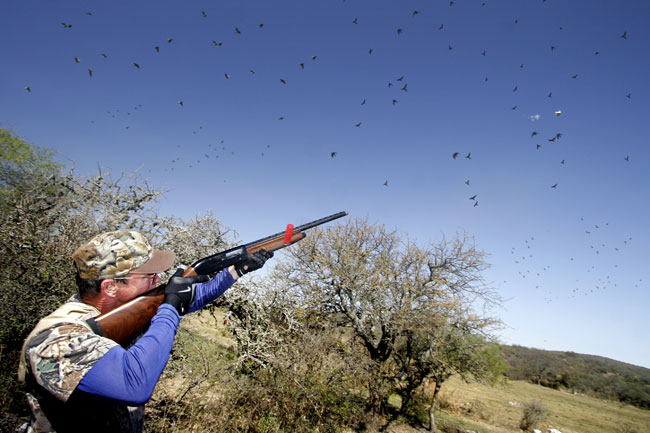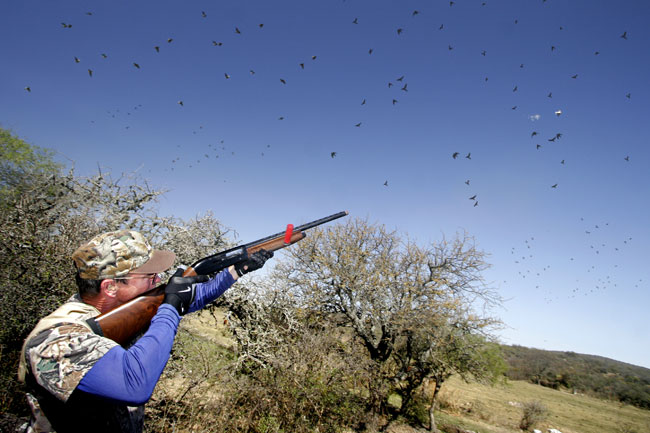Banding is an major part of the management of all migratory game birds in North America. To a waterfowl hunter, a duck or goose band is a treasured acquisition. In fact, these aluminum rings become testaments of the hunter’s skill, luck or at least a log of hours spent in the field. But dove hunters need to keep and eye out for these leg bands, too. Heading into the summer, the Texas Parks and Wildlife Department (TPWD) will be trapping and attaching tiny metal leg bands on several thousand mourning dove as part of a larger national effort coordinated by the U.S. Fish and Wildlife Service.
In addition to mourners, white-winged doves will also be banded across the state. TPWD estimates that approximately 3,000 whitewings will be banded in 2011. Banding will begin on June 1 and end on August 15. It takes a lot of effort to capture and band doves, but the real data comes when hunters report dove bands recovered from harvested birds. As whitewings continue to expand across the state, keeping tabs on these dove populations is becoming increasingly important.

Dove band recoveries are revealing extensive travel records and offer interesting insight into the ecology of this prominent migrant. Most banded mourning doves in Texas do not survive to see a second year and extremely few live past three years of age. However, the oldest mourning dove ever recovered in Texas was 9 years old.
White-winged doves banded in Texas have been recovered in four states including Texas, four countries, and one in international waters on an oil platform. The oldest white-winged dove ever recorded in Texas was 17 years old. The farthest recovered white-winged dove banded in Texas originated in Hidalgo County and was recovered in Nicaragua, 1,242 miles from the original band site.
For Texas, the implications of dove management are significant considering the Lone Star State boasts fall dove populations in excess of 40 million birds and its 300,000 dove hunters harvest about 6 million birds annually or roughly 30 percent of all doves taken in the United States. Dove hunting also has a major economic impact, contributing more than $300 million to the state economy. But, despite having more dove hunters than any other state and harvesting more birds than any other state, Texas has the lowest dove band recovery rate in the nation.
“I think most dove hunters aren’t aware of the banding effort,” said Corey Mason, TPWD’s dove program leader. “Unlike with ducks, hunters aren’t looking for bands and because dove bands are only about the size of a bead they don’t stand out.”
Data obtained from dove banding efforts are used to estimate survival and harvest rates and population abundance. These estimates are then used in population and harvest models to determine dove hunting regulations. If you are lucky enough to harvest a banded dove this hunting season, report the dove band and help biologist do their best to manage our natural resources.
